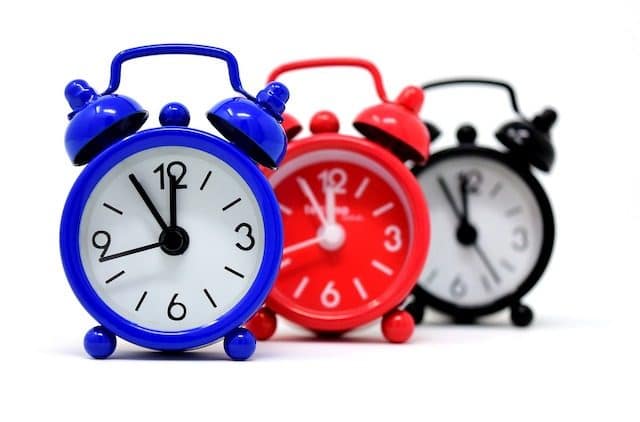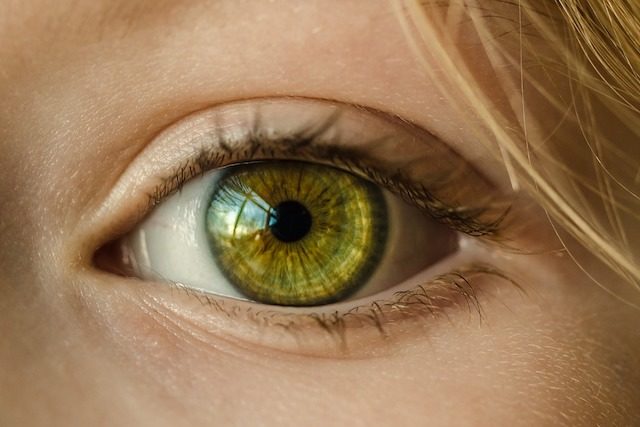Dreaming is the both one of the most commonplace — and one of the most bizarre — things in the world. Every night, while asleep, we vividly hallucinate impossible things and then remember little to none of it in the morning. When we do remember, it makes almost zero sense and its incomprehensibility makes it even harder to retain any kind of proper memory of what we dreamt.
To make matters even stranger, despite years of research, experimenting and speculation, the best trained on the subject are still no closer to a definitive answer as to why we dream in the first place — that first most important question, of what the purpose of dreaming even is to begin with. In order to attempt to get to the bottom of that age old question, and other vexing dream-related issues, researchers have performed some rather bizarre sleep and dream studies.
10. Constantly Waking People Up

REM sleep is that deep, restorative sleep that is short-lived, but really revitalizes us so much more than the other dream stages. Researchers have long known of an effect called REM rebound wherein the more you are deprived of REM sleep, the quicker your brain will shift into REM, and the more it will try to make up. In order to test this REM rebound effect, as well as test the link that it had on dreams, researchers needed to wake people up in the middle of the night, over and over again. The experiment was overseen by a psychologist named Tore Nielsen, who headed up the dream and nightmare lab at Sacre-Coeur Hospital in Montreal.
The subjects had to be hooked up to equipment that could tell when they had reached REM sleep, in order to know when to wake them up. Since they were studying REM deprivation, people were woken up as soon as they entered REM. The more this was done, the sooner they slipped right into when they fell asleep — some people were awakened as many as 40 times in a night to collect data. By talking to the test subjects and noting the intensity of their dreams, they were also able to make a connection that showed that REM sleep is strongly connected to the intensity of dreaming.
9. Testing For The Existence of Lucid Dreams By Tracking Eye Movements

Lucid dreams, for those who don’t know, are when you are able to become aware in your dream and start actively influencing what is happening. These dreams are the greatest passion of dream enthusiasts everywhere, and there are entire communities built around exploring and sharing the best strategies, and even seeing if people can meet in dreams as a group somehow. For the longest time, researchers have been skeptical if lucid dreaming is actually a real thing, or just wishful thinking on the part of the dreamer. In order to get to the bottom of this, several people put in a lot of work. First, a man named Keith Hearn came up with an idea where dreaming people would be able to use eye movements to signal while they were dreaming.
It was later perfected by a scientist named Stephen Laberge, who showed conclusively from his experiments that people could indeed lucid dream, and primitively communicate with the outside world using pre-agreed upon eye movements. Since then other researchers have gone further in showing that lucid dreaming is truly distinct from other forms of dreaming or waking states — which means there is something truly different about it after all. Interestingly though, researchers found that test subjects could count at the same pace in the dream as well as the real world, but took much longer in the dream world to complete physical actions.
8. Using Mice With Genetically Modified Cells To Pinpoint Cell Activity

RBD, short for REM Behavior Disorder, is a relatively little-known sleep dysfunction where you act out often violently while you are in that most important stage of sleep. Normally, REM sleep is when your body really locks down and most people don’t move or do little more than twitch. However, people with RBD will often move very physically while in REM, sometimes hurting the person they are sleeping with, or hurting themselves jumping or falling out of bed. For the longest time, researchers believed there was a link with RBD to Parkinson’s and Dementia, mainly because especially with Parkinson’s, RBD seemed to be a pretty reliable precursor. However, for the longest time, it was unproven, until a pretty bizarre study.
The study, led by John Peever, a biology professor at the University of Toronto, sought to pinpoint once and for all what both caused RBD, and if there was any definitive link between RBD and other degenerative brain diseases. In order to first make sure they knew which cells were responsible for REM sleep, they genetically made special mice whose brain stems were sensitive to light, and then shined lights on various parts to turn REM sleep on and off and pinpoint the source cells. The researchers then injected the poor mice with a virus targeted at these specific cells to see if it would give them RBD, which it did handily. While they did manage to prove the link, they caution that its use is limited. Early intervention with this knowledge might help prevent further degeneration from occurring, but with any damage that has already occurred it is too late.
7. A Study Found That Your Dreams Get Weirder The Longer You Sleep

A study headed up by Dr. Josie Malinowski of the University of Bedfordshire in the UK was designed to test how dreams and their scale of contextual weirdness increased or decreased as the night went on. The study had 16 subjects and it lasted two nights. Each night the test subjects would be woken up a total of four times and asked about the content of their dreams. According to the study, the subjects tended to dream about fairly banal things at first, such as things they did during their day, and then things would get weirder as the night wore on.
This could fit with some theories about dreaming; that it is really your mind both consolidating your memories, and putting together or making sense of things throughout the day you didn’t fully have time to process. This could explain why people start dreaming about their day, and as they get near the end of the night, they start dreaming more and more in the abstract. Of course, no one knows for sure why we dream so this is all theory — it is also hard to know how much the regular wakeups could have affected the dream. The study might have been more accurate with more people, control groups, and better rigor in general. While it is amusing and certainly interesting, it should be taken with a grain of salt.
6. A “Study” Was Done To Test The Effect Of Eating Cheese On Dreaming

Some people may have heard the old wives tale that eating cheese before bed will give you nightmares — likely this stemmed from worries about indigestion or the like. Well, the British Cheese Board was having none of its favored choice of food being so cruelly maligned, so they decided that they needed to prove once and for all that there was nothing wrong at all with eating some cheese before bedtime — in fact, they would go farther; it could actually be beneficial.
Now, many people criticized the “study” because it was really more of a public survey of willing volunteers, and because it had very little scientific methodology and no real control groups. They simply asked people to eat two thirds of an ounce of cheese before bed, and report their dreams, as well as if they had any nightmares. The vast majority of people reported good dreams and no one reported nightmares. The British Cheese Board was not only triumphant about the results of their so-called research, but also claimed that the survey had shown that different types of cheeses caused different dreams. While cheese will always be popular, no one really took the British Cheese Board seriously over the whole thing.
5. The Research Test Designed Solely To Understand The Bizarreness Of Dreams

Armando D’Agostino is a researcher at the University of Milan in Italy, who was interested in how psychotic and bizarre dreams could become. He put together a study where twelve subjects were tasked with taking down journals of any dreams they had. On any day they had a dream, they were given a picture and told to write a crazy story related to the picture, and that had nothing to do with their day or their previous dream.
One month later, his team brought the test subjects back to the lab and scanned their brain with an MRI machine and found that the same complex language processing areas in the brain were active when both the fantasy story and the dreams were read back to them. However, the fantasy stories always had an inherent logic to them, while the dreams tended to be truly illogical. And as the dreams started to tailspin into further and further insanity, the complex language activity of the brain started to decrease. Armando, the head researcher, speculates that the brain stops processing as much because the information presented starts to become so bizarre to the conscious mind that it gives up even trying to understand it.
4. The Study Determined To Use Magnetic Imaging To Predict What You Are Dreaming About

Dr. Yuki Kamatani of the ATR Computational Neuroscience Laboratories in Kyoto headed up a study a few years ago that broke new ground in not only understanding dreams, but being able to peer into them and know what is happening while it is occurring — without even getting any direct feedback from the dreamer, such as with the eye movement method we talked about in an previous entry. The study started with three volunteers who would nap in MRI machines, so their brain patterns could be scanned as they dreamed. They would be woken up regularly and asked about the content of their dreams, while also being shown pictures that related to that content.
The researchers performed these tests and collected data constantly, and then fed it into an algorithm, which was designed to predict what someone was dreaming about by scanning their brain and looking for specific patterns. The researchers were able to quickly get to the point where they could predict what someone was dreaming about with 60% accuracy. While 60% may not sound incredibly impressive at first, the fact of that matter is that someone could be dreaming about literally anything. Getting within 60% out of the countless things someone could be dreaming about is almost eerily accurate.
3. Despite Little Research On Marijuana In General, Its Effect On Dreaming Has Been Studied

An anecdote that’s been passed around forever is that if you are used to smoking marijuana on a regular basis, and suddenly stop, you will start having crazy and intensively vivid dreams, that sometimes seem to last consciously for quite some time. Research on the matter exists, but it’s fairly vague; there are only a handful of studies, all rather questionable, and they point in opposite directions. Dr. Timothy Roehrs, who works at the Henry Ford Health System, and Leslie Lundahl of Wayne State University of Medicine performed a study that Roehrs believes coincidentally shed some light on the situation.
The original belief was that stopping marijuana use caused vividly crazy dreams because marijuana suppressed REM sleep, but Roehrs is convinced this is inaccurate. In a separate study of marijuana use regarding sleep, he discovered that marijuana users who went off the substance for even one night did not have suppressed REM sleep, but they did have poorer sleep efficiency in general — to the point they would medically qualify for insomnia studies. Roehrs speculates that this could mean the real reason people have crazy dreams, is simply because when they stop using marijuana, they start to sleep more poorly. This means more waking up in the middle of the night, which means more chance of waking up during REM sleep — which is one of the best ways to actually remember parts of a dream we were having.
2. Multiple Studies Have Been Done On Sexsomnia

Sexsomnia is pretty much exactly what it sounds like — performing sexual acts while you are asleep. While this may not sound too horrible at first, if you are someone who lives alone and sleeps in your own bed, anyone who sleeps with a significant others, or bunks with others in the same room, is likely horrified by the implications. Many studies have been done on sexsomnia, and one of the factors that they all share in common is that 100% of people who have been studied claim to not remember a single bit of what they did once they wake up, and as far as studies have been able to tell, these people are not lying.
Interestingly, research has shown that many people with sexsomnia also have some kind of obstructive sleep apnea, and that the breathing apparatus that people with apnea use to help them sleep with at night has had some success in helping people who are afflicted by sexsomnia. Also, while the affliction can appear in any gender, at least in most known cases that have been reported, it tends to skew heavily towards the males as being more likely to have sexsomnia. Some people may find this funny, and it is the type of thing you would see played for laughs in a comedy, but for those who have it, treatment can be tricky, and it is no laughing matter.
1. Researchers Are Studying The Link Between Virtual Reality Gaming And Lucid Dreaming

Virtual reality is fast becoming a true trend — console companies were trying to push it for some time, but now almost every company has a VR headset product. These are designed to be as immersive as possible, and the technology will only get better over time. However, as the technology improves and it becomes even more realistic, some researchers are concerned about how much a truly realistic virtual world could affect us, and how it could potentially alter our consciousness. Jayne Gackenbach, a psychologist at MacEwan University, wanted to understand just how much VR was affecting us.
She had people play an Oculus Rift game for 15 minutes, and then describe their last dream — she also had a control group that played the game and described their dream, but did not use the VR headset. The people who had used the Oculus Rift headset claimed to remember their dreams from the previous night much better, which suggests that their time with the headset either altered their memory to think their dream was more lucid, or that using the headset helped them get in a similar brain wave state to better remember what had been going through their mind when they had been dreaming.
As a coincidence during her study, she also discovered from surveying participants that gamers, especially those who used VR devices, were much more likely to report lucid dreaming, or at least having limited control over their dreams in general, as opposed to the general non-gaming populace. Researchers believe this could be because playing video games puts you in a mindstate where you are used to controlling and changing your environment, and you are often interacting with environments that already don’t make real world sense — using VR just intensifies the effect even further.